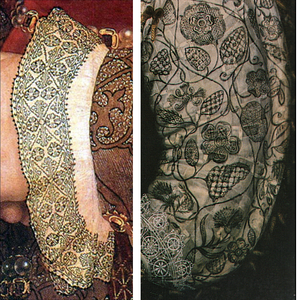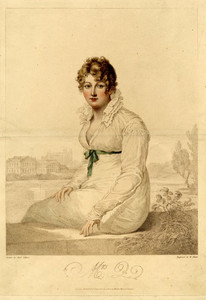Who wore it best?
- Robin K. Floyd

- Jan 11, 2022
- 3 min read
Some fads may come and go – and stay gone – but some fashion trends follow cyclical patterns and reappear in surprising and unexpected ways centuries later. So we here at Jane Austen Summer Program wonder, who wore it best?

In Shakespeare’s time, sumptuary laws enforced who could wear what. If members of the working class were caught wearing a garment similar to what the nobility wore, they could be punished, likely with a fine. Such laws had fallen out of favor by Jane Austen’s time, but the cost of fabrics was still largely prohibitive for workers and the tradition of judging someone’s class by their clothing had already been established.
Silhouette
If you were a lady during the English Renaissance, you would have worn a Farthingale, or a hoop skirt to support the shape of the dress (as seen on the left). If you were a lady in the late 18th century, you would probably be wearing a transitional garment like a round gown or a Chemise a la Reine (as seen on right). The general silhouette is surprisingly similar - who wore it best?
It’s all in the details
Adding special little details to give your garment that one-of-a-kind look never goes out of style. In Tudor times, black work embroidery was very popular, particularly among the gentry. In Regency Era England, white work embroidery was en vogue. Who wore it best?
Two Ruffs don’t make a Right
The Elizabethan collar (for humans) was constructed by yards of starched and stitched fabric that required so much work to keep clean that only the wealthiest fashionistas could hope to wear it! The look resurfaced in the early 19th century as wearers began to romanticize their own history. Who wore it best?
Underpinnings
In Elizabethan England, it was customary for wealthy women to wear partlets (as seen in the portrait of Queen Elizabeth, herself). The garment is very similar to the chemisette of Regency England (as seen on Jane Austen, herself). Who wore it best?
Hats
Hats were required every Sunday during the English Renaissance as a means to subsidize the wool industry at the time. Hat wearing continued to be customary in Regency England. Men and young women might dispense with their headwear at home or at certain events, but mature women would probably still don a cap to cover their hair most of the time. Who wore it best?
Legs
Men’s style from the Regency Era may seem more familiar to the modern eye that is accustomed to three-piece suits than the doublet and codpiece of the 1500s. Still, we cannot help but notice how men’s clothing from both time periods celebrated their calves! Who wore it best?
While we do not expect to see farthingales these days outside a renaissance fair or a stage play, the concept of structure forming undergarments has not gone away. We see hints of chemisettes in dickies or lace collar necklaces. Fashion continues to evolve to keep up with the humans that wear it and we can’t wait to see what we will wear next!
To learn more about Renaissance Era fashion, check out "The Tudor Tailor" by Mikhaila and Malcolm-Davies. To learn more about Regency Era fashion, check out "Dress in the Age of Jane Austen Regency Fashion" by Hilary Davidson. And a special thank you to Jeremy Clos of Raleigh Little Theater’s costume department for sharing some information about fashion history.
































Comments